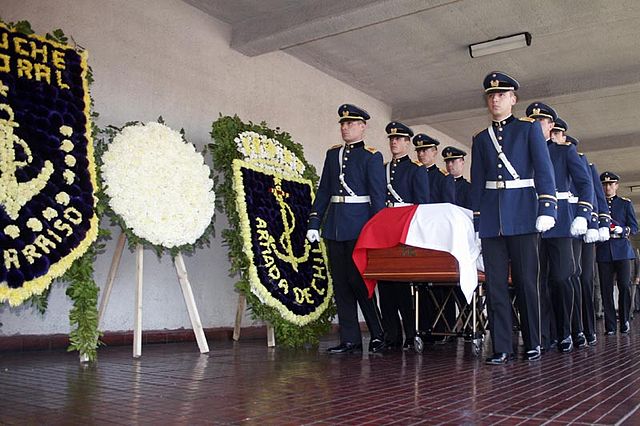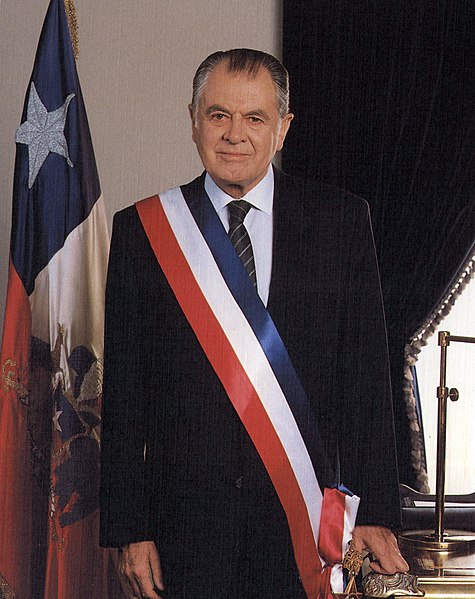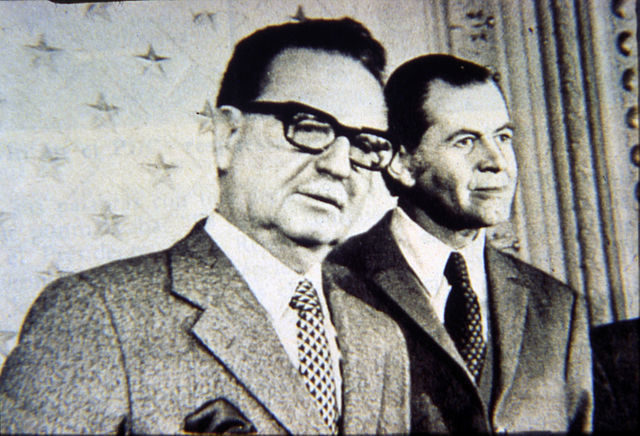Chilean transition to democracy
On 11 March 1990, Chile the military regime of General Augusto Pinochet ended and was replaced by a democratically elected government. This transitional period lasted roughly two years although some processes may have lasted significantly longer. Unlike most democratic transitions led by either the elite or the people, this democratic transition process is known as an intermediate transition – a transition involving both the regime and the civil society. Throughout the transition, as the regime increased repressive violence, it simultaneously supported liberalization – progressively strengthening democratic institutions and gradually weakening that of the military.
It is believed that the visit of Pope John Paul II in April 1987 may have influenced Pinochet's decision to call for elections. The Pope is shown here at the Pontifical Catholic University of Chile on 4 April 1987.
In December 1989, Patricio Aylwin, head of the Concertación coalition, won the first democratic election in Chile since 1970.
Pinochet's funeral.
Patricio Aylwin Azócar was a Chilean politician from the Christian Democratic Party, lawyer, author, professor and former senator. He was the 30th president of Chile and the first president to be elected after the absolute rule of dictator Augusto Pinochet, and his election marked the Chilean transition to democracy in 1990.
Official portrait, 1990
President Salvador Allende with then-senator Aylwin
Aylwin in his office, 1990
Aylwin in July 2011







